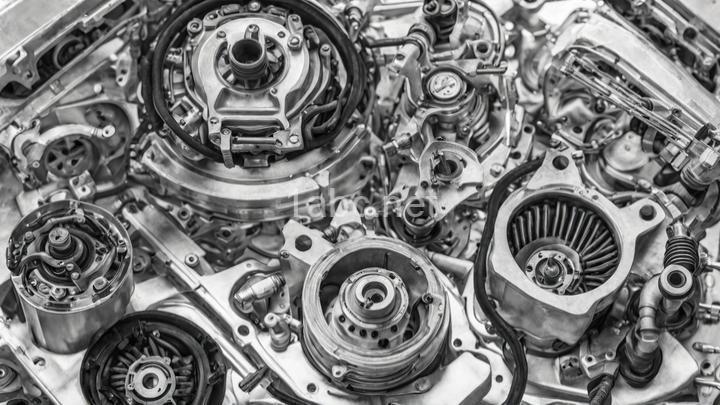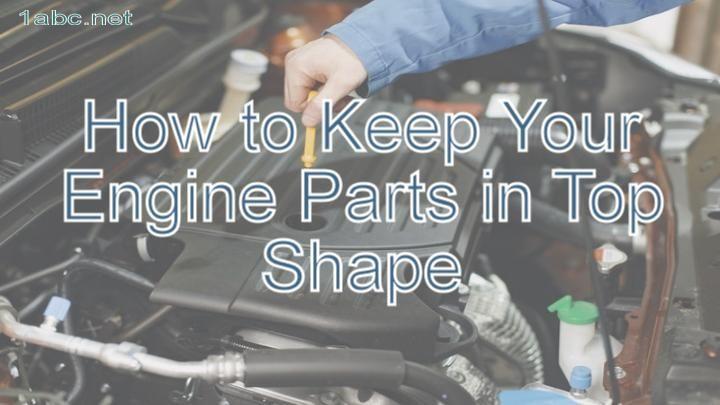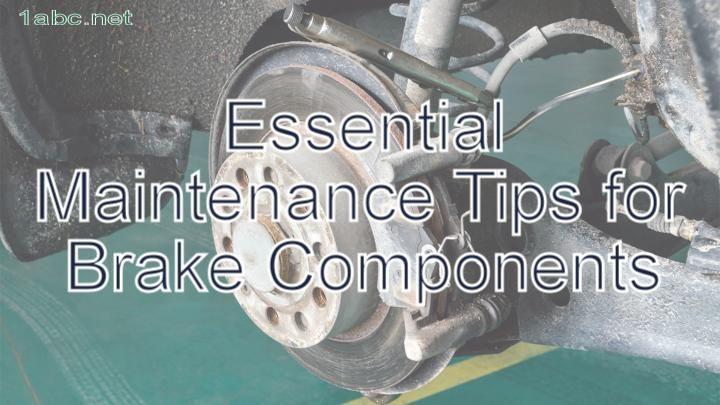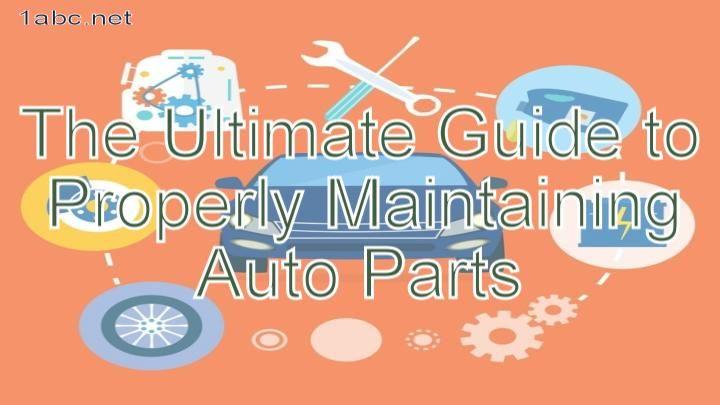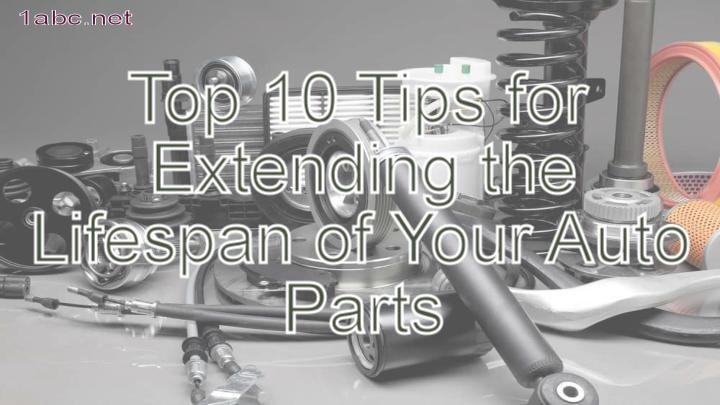Saving Money on Auto Repairs: Solving Common Car Part Issues Yourself
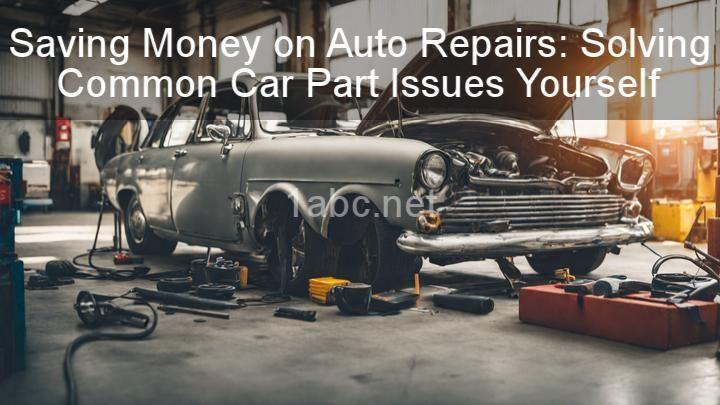
Introduction:
Auto repairs are a necessary part of owning a car, but they can often be costly. From engine problems to electrical system malfunctions, there are numerous car part issues that can arise and require professional attention. However, not all car repairs require a trip to the mechanic. In this blog post, we will provide you with tips and guidance on how to save money by solving common car part issues yourself. By understanding basic car maintenance and learning how to identify and fix common problems, you can take control of your car's health and your wallet.
I. Understanding Basic Car Maintenance
Before we dive into solving specific car part issues, it's important to emphasize the significance of basic car maintenance. Regular upkeep can help prevent major issues from occurring in the first place, saving you both time and money. Simple tasks like checking fluid levels, tire pressure, and regular cleaning can go a long way in ensuring your car's longevity and performance. By staying on top of these basic maintenance tasks, you can catch any potential issues early on.
II. Identifying Common Car Part Issues
A. Engine Problems
The engine is the heart of your car, and when it's not functioning properly, it can cause a lot of headaches. Some common engine issues include overheating, strange noises, or poor performance. If you notice any of these symptoms, it's important to troubleshoot the problem before it worsens. One simple step you can take is checking the coolant levels. Low coolant levels can lead to overheating, so ensuring that the coolant is at the appropriate level can help alleviate this issue. Another area to inspect is the spark plugs. If they are worn out or covered in debris, they may need to be replaced. By addressing these common engine problems yourself, you can save money on costly repairs.
B. Braking System Troubles
Your car's braking system is crucial for safety, so it's important to pay attention to any signs of trouble. Common signs of braking system problems include squeaking or grinding noises when you apply the brakes. If you experience these symptoms, it's time to inspect your brake pads. Worn-out brake pads can cause damage to other parts of the braking system, so it's essential to replace them promptly. By learning how to change your brake pads yourself, you can save money on labor costs and ensure your brakes are in top condition.
C. Electrical System Malfunctions
Electrical system malfunctions can be frustrating and inconvenient. Dead batteries and faulty fuses are common issues that can be easily addressed without professional help. If your car won't start due to a dead battery, you can jump-start it using jumper cables and another vehicle. It's important to follow the proper safety precautions when jump-starting a car to avoid any accidents. If your battery is beyond repair, replacing it yourself is a relatively simple task that can save you money. Additionally, checking and replacing faulty fuses can often solve electrical system malfunctions. By learning these DIY fixes, you can avoid unnecessary trips to the mechanic.
III. DIY Fixes for Common Car Part Issues
A. Oil Change and Filter Replacement
Regular oil changes are essential for your car's performance and longevity. By learning how to change your oil and replace filters yourself, you can save money on routine maintenance. Start by gathering the necessary tools and materials, including an oil filter wrench, a drain pan, and the appropriate oil and filters for your car. Follow the step-by-step instructions provided in your car's manual, and be sure to dispose of the used oil and filters properly. By taking the time to learn this DIY fix, you can save money and have the satisfaction of maintaining your car on your own.
B. Changing Brake Pads
As mentioned earlier, changing brake pads is a crucial skill to learn for both safety and cost-saving reasons. To change your brake pads, you will need a few tools, including a lug wrench, a C-clamp, and a jack stand. Start by safely lifting your car and removing the wheel. Then, remove the brake caliper and carefully remove the old brake pads. Install the new brake pads, ensuring they are secure. Finally, reassemble the brake caliper and the wheel. It's important to follow the specific instructions provided by your car's manufacturer. If you're unsure, there are many video tutorials available online that can guide you through the process. By mastering this DIY fix, you can save money and have peace of mind knowing your brakes are in good shape.
C. Replacing a Dead Battery
A dead battery is a common issue that can leave you stranded. Knowing how to replace it yourself can save you time and money. Start by disconnecting the negative terminal of the old battery, followed by the positive terminal. Remove any additional brackets or connectors that may be holding the battery in place. Carefully lift out the old battery and replace it with the new one, making sure it is securely in place. Reconnect the positive terminal followed by the negative terminal. It's important to properly dispose of the old battery at a designated recycling facility. By learning this DIY fix, you can avoid the hassle of waiting for roadside assistance and save money on labor costs.
IV. When to Seek Professional Help
While there are many car part issues you can solve yourself, it's important to recognize your limitations. Some repairs require specialized knowledge and tools that only trained mechanics possess. Complex issues like transmission problems or engine rebuilds are best left to the professionals. Attempting these repairs without proper knowledge and expertise may lead to further damage and ultimately cost you more in the long run. Knowing when to seek professional help is crucial for the overall health and safety of your vehicle.
Conclusion:
In conclusion, taking control of your car's maintenance and repairs can save you a significant amount of money over time. By understanding basic car maintenance, identifying common car part issues, and learning how to solve them yourself, you can become proactive in maintaining your vehicle. Whether it's changing your oil, replacing brake pads, or installing a new battery, these DIY fixes can help you save money on labor costs and ensure your car is in top condition. We encourage you to take the time to learn these skills and share your DIY repair experiences in the comments below. Let's empower ourselves and save money on auto repairs together!
FREQUENTLY ASKED QUESTIONS
What is Saving Money on Auto Repairs: Solving Common Car Part Issues Yourself?
Saving Money on Auto Repairs: Solving Common Car Part Issues Yourself is a guide or article that provides tips and techniques for individuals to fix common car part issues without the need to visit a professional mechanic. By learning how to solve these problems themselves, car owners can potentially save money on expensive repair bills. The guide may include step-by-step instructions, helpful illustrations, and troubleshooting tips to ensure a successful DIY repair. Overall, this resource aims to empower car owners to take care of their vehicles and resolve common car part issues on their own, thereby reducing the cost and hassle of visiting a repair shop.
How can this content help me save money on auto repairs?
This content can help you save money on auto repairs by providing tips, advice, and information on various topics related to auto repairs. It may include information on DIY repairs, maintenance tasks you can do yourself, how to find trustworthy and affordable mechanics, ways to prevent common car issues, and factors to consider when choosing auto parts or service providers. By implementing the suggestions and recommendations in this content, you can potentially reduce your expenses and save money on auto repairs.
What are common car part issues that can be solved by myself?
There are several common car part issues that can often be solved by yourself with a little bit of knowledge and some basic tools. Here are a few examples:
- Dead Battery: If your car won't start, it could be due to a dead battery. You can try jump-starting it using jumper cables and another vehicle or a portable jump starter.
- Flat Tire: If you have a flat tire, you can change it yourself by following some simple steps. Use a jack to lift the vehicle, remove the lug nuts, replace the flat tire with the spare tire, and then tighten the lug nuts.
- Blown Fuse: If a particular electrical component in your car, such as the radio or power windows, stops working, it could be due to a blown fuse. You can locate the fuse box, identify the blown fuse, and replace it with a new one of the same amperage.
- Broken Headlight or Taillight: If one of your headlights or taillights is not functioning, you can usually replace it yourself. Access the bulb holder from the back of the headlight or taillight assembly, remove the old bulb, and insert the new one.
- Worn Wiper Blades: If your wiper blades are leaving streaks or not effectively clearing the windshield, you can replace them easily. Lift the wiper arm away from the windshield, press the release tab on the wiper blade, and slide it off. Then, attach the new wiper blade by sliding it onto the arm until it clicks into place.
It's important to note that while these issues are often manageable to fix on your own, it's always a good idea to consult your car's owner manual or seek professional help if you're uncertain or uncomfortable with the process.
Is it safe to attempt car repairs on my own?
It depends on your level of experience and the complexity of the repairs you're attempting. For simple tasks like changing a flat tire or replacing windshield wipers, it is generally safe to do it yourself with the proper tools and guidance. However, for more complicated repairs or those involving specialized equipment, it may be safer and more effective to seek professional help. Remember to prioritize your safety and have a thorough understanding of the repair process before attempting it on your own.
